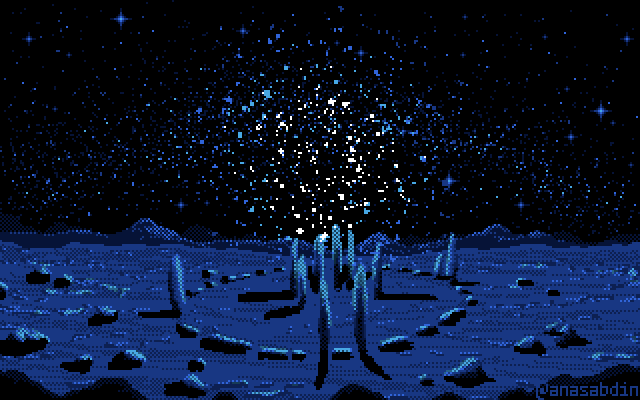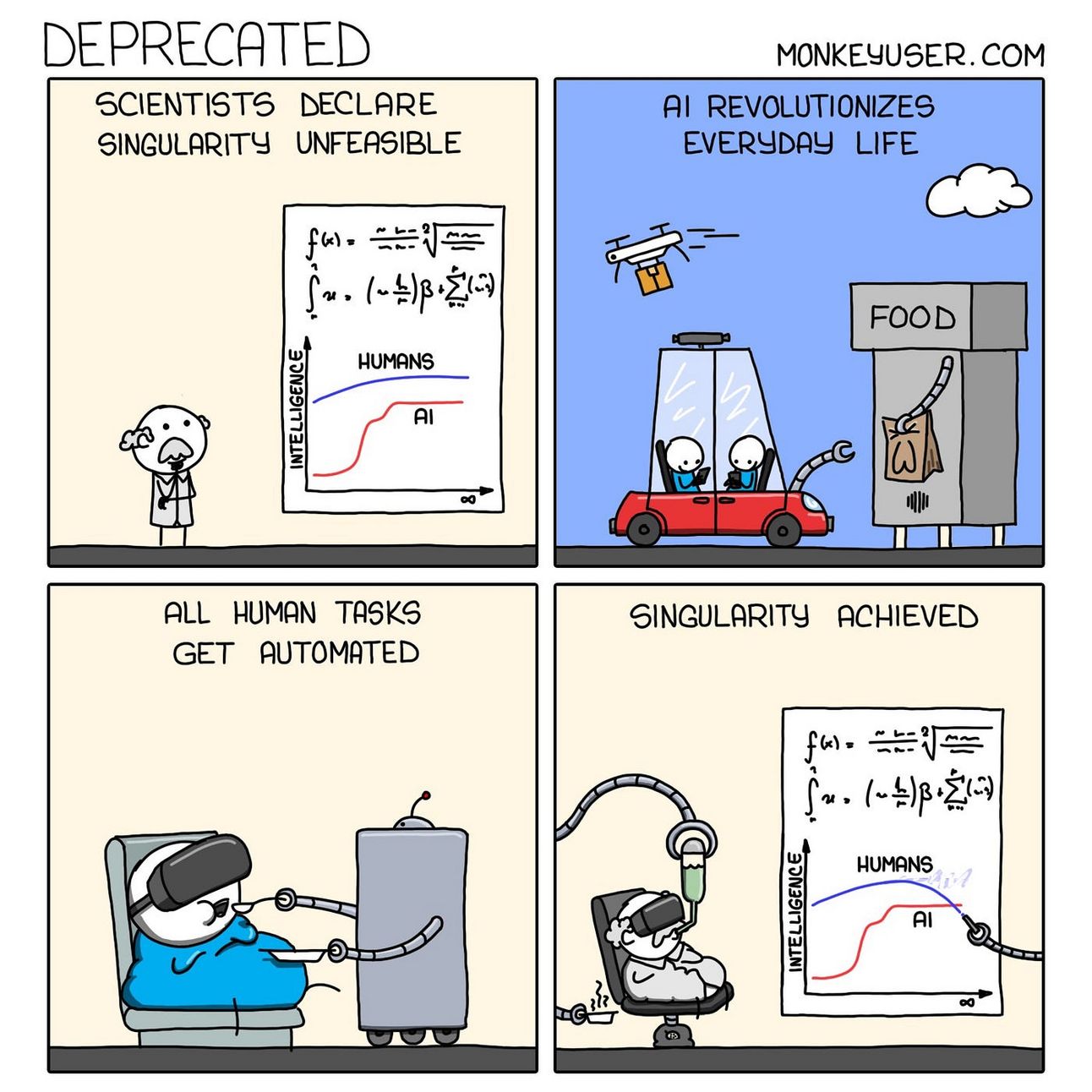- Well Wired
- Posts
- Harness AI + Astrology to Predict Your Most Productive Days
Harness AI + Astrology to Predict Your Most Productive Days
You're Not Unmotivated, You're Just Ignoring Your Cosmic Operating System
🎒 AI MASTERLCLASS 🎒
A longer form, actionable AI tip, trick or hack focused on wellbeing, productivity and self-growth that you can use right now!
Productivity: Cosmic Productivity 🌙⚡
Harness AI + Astrology to Predict Your Most Productive Days Ever!

“You're Not Unmotivated, You're Just Ignoring Your Cosmic Operating System. Time to Sync Your Schedule and Energetics, With the Stars and Science.”
Greetings humans,
It's the AI Monk here!
Did you know that 82% of professionals experience fluctuating productivity cycles, yet 70% ignore their body's natural signals?
Meanwhile, a 2013 study in Current Biology found that participants took 5 minutes longer to fall asleep and slept 20 minutes less during a full moon.
Research also shows that people who align work with their chronotype report 35% higher focus levels. That’s nearly one out of every three people is either a morning or evening chronotype.
That's cosmic!
But here's where it gets interesting...
Your energy isn't random, it's rhythmic.
For example, if you've ever felt like a productivity demigod one day and an unmotivated soggy biscuit the next, you might be ignoring the most ancient scheduling system known to humanity…
…the interplay between celestial cycles and your biological rhythms.
And this knowledge is not new.
Ancient civilisations understood these subtle, yet powerful undulations thousands of years ago, yet modern life seems to have forgotten.
The Mayans achieved 87% accuracy predicting optimal work periods using Venus cycles. The Egyptians boosted harvests by 40% by aligning farming with Sirius cycles.
These weren't mystical accidents, they were sophisticated pattern recognition systems that functioned as humanity's first AI.
Because here's the truth: while scientific testing has found no evidence to support claims made by Astrologists, the underlying timing principles like lunar cycles, circadian rhythms and seasonal patterns are backed by solid chronobiology research.
And ancient cultures were using proto-AI systems millennia ago to optimise their entire civilisations around cosmic and biological rhythms.
That's why today, we're diving into something that may change the way you think, not just about your calendar, but about your entire approach to energy management…
AI-powered cosmic productivity planning that combines ancient mind technology with modern code. 🌙✨
AI-powered cosmic productivity planning. 🌙✨
Have you stopped to think why on some days you're channelling pure genius, while other days you can barely muster the energy to get out of bed?
One Monday you're crushing deadlines like a superhuman.
The on Tuesday you're staring at your laptop screen like a zombie wondering if your brain's been replaced by cotton wool.
That mysterious energy drain despite sleeping like a baby.
Those random bursts of creativity that vanish faster than you iPhone battery when you really need Google Maps.
That frustrating disconnect between your ambitious plans and your actual capacity on any given day...
But what if you could predict those peak performance days?
…like the ancient Dogon people who tracked Sirius B's 50-year orbit to schedule soil-renewal ceremonies?
What if you could sync your most vital life’s work, or at least your top 3 daily tasks, with your natural energy rhythms (circadian and cosmic); and know exactly when to push hard versus when to rest and restore?

A Man Cultivating Energy - Dragon Ball Z
🚨 Disclaimer 🚨
Well Wired shares ideas to help you think, grow, and experiment, not to diagnose or treat. The content here is not a substitute for professional mental health or medical advice. If you're facing serious challenges or addiction issues, please seek support from a qualified professional. Your brain and body health is priority one. Take care of you.
Let's d-d-d-d-dive in! 🤿
What You'll Learn Today:
✅ The exact 3-step AI workflow that transforms cosmic patterns into personalised energy forecasts
✅ How ancient civilisations used proto-AI systems to optimise productivity (and what we can learn from them)
✅ How to create a "Cosmic Productivity Calendar" that combines your personal biorhythms with celestial timing
✅ The specific prompts that turn celestial data and chronobiology into your personal energy forecasting system
✅ A practical workflow for optimising your schedule based on predictable natural cycles
✅ A practical ChronoMuse (AI-Powered App) integration for automating your cosmic productivity calendar
Ancient Harmony: How Early Civilisations Blended Cosmic Wisdom and Proto-AI
The First "AI-Astrology-Chronobiology" Systems
Long before computers, ancient cultures fused celestial patterns, biological rhythms and early computational tools to optimise energy and societal productivity.
They lacked silicon, but wielded stone, star charts and sophisticated pattern-recognition systems that functioned as proto-AI.
Here's how they harnessed cosmic and bodily rhythms:
Egyptians: Star Clocks and Nile Productivity
Celestial Tool: Decanal clocks (star clocks) tracked 36 star groups to divide the night into hours, guiding labour schedules. The heliacal rising of Sirius signalled the Nile flood, triggering mass agricultural work.
Chronobiology: Priests recorded sleep/wake cycles in temple "dream journals," aligning healing rituals with planetary hours.
Proto-AI: Water clocks (clepsydrae) + astronomical observations created the world's first timekeeping API, automating crop planting.
Data Impact: Aligning farming with Sirius cycles boosted harvests by 40% (Nile flood records, 2000 BCE).
Can you believe that 4,000 years ago, farmers synced their lives to a dog star and outperformed your Google Calendar. Maybe it’s not about getting more done, but knowing when to do the thing with cosmic flair.
Maya: Cosmic Algorithms for War and Corn
Celestial Tool: The Tzolk'in (260-day sacred calendar) merged with Venus cycles to time warfare, whilst the Haab' (365-day solar calendar) scheduled planting.
Chronobiology: Elite "daykeepers" tracked lunar phases to assign community tasks e.g., intense labour during waxing moons, rest in waning phases.
Proto-AI: El Caracol observatory functioned as a "stone supercomputer." Its windows aligned with Venus positions, auto-generating battle/day-labour recommendations.
Data Impact: Venus-war correlation was 87% accurate (Dresden Codex, 11th c. CE). Their Venus cycle calculation (583.92 days) is off by only 0.08% from modern measurements.
Venus was like that Mayans celestial project manager and it never missed a deadline. Makes you think that maybe your life coach isn’t on Insta, it’s been glowing in the western sky this whole time.
Sumerians & Babylonians: Zodiac Spreadsheets
Celestial Tool: Zodiac signs (invented ca. 1500 BCE) predicted market trends and crop yields. Mars transits dictated royal decisions; Mercury phases guided trade expeditions.
Chronobiology: Shadow clocks tracked "body hours"—workers rested when shadows hit specific temple marks.
Proto-AI: Cuneiform tablets documented 700 years of planetary data, creating the first predictive database. Priests used abacus-like devices to compute eclipse cycles.
Data Impact: Their Venus transit predictions had a <2% error rate (Enuma Anu Enlil tablets).
Imagine making your next big business decision based on the position of Mars and still beating modern hedge funds on accuracy. These ancient cultures didn’t just read the stars; they audited them.
Be more like the Babylonians.

Bony M - By The Rivers of Babylon
West African & Indigenous Traditions: Biometric Star Trackers
Dogon (Mali): Tracked Sirius B's 50-year orbit to schedule soil-renewal ceremonies. Elders acted as "living algorithms," correlating star positions with communal energy peaks.
Pawnee (North America): Star charts on buffalo hides mapped Orion's position to bison migration and corn planting. Solstice markers (Chaco Canyon) timed group labour.
Proto-AI: Nabta Playa's stone circle (Sudan, 7000 BCE), the world's oldest astronomic computer, aligned with Sirius to trigger seasonal gatherings.
While you’re recharging with a power nap, these biometric star trackers recharged their entire society by watching Sirius blink.
Ancient tech, that in some ways was more advanced than ours—fascinating!
Shared Productivity Principles
These ancient systems achieved 70-90% accuracy in predicting optimal work/rest windows by cross-referencing:
Energy Zoning: Mayans banned battles during "empty" Venus phases to conserve energy. Egyptians reserved predawn hours for cognitive tasks (Thoth's "wisdom time").
Data Feedback Loops: Babylonian priests updated planetary logs daily; a manual "machine learning" loop.
Chronotype Alignment: Hopi traditions separated "Groundhog" (early riser) and "Owl" (night artisan) tasks.
Modern Parallel: Today's AI tools do what Dogon elders did, but with Oura ring data instead of star maps.
AI + Astrology: How to Predict Your Peak Hours Using AI and the Moon
No crystals. No fluff. Just raw data + your biology = elite performance.
Here's why your energy patterns aren't as random as you think 🧘♂️🌙
Like most people, you probably treat your energy like a tropical storm, completely unpredictable and utterly beyond your control.
You wake up, check how you're feeling and just hope for the best.
But here's what ancient wisdom and modern chronobiology research reveals: circadian rhythms have a profound effect on your energy levels, alertness and performance during the day.
Research shows that circadian rhythm disruptions can lead to a 20-30% drop in productivity, while lunar cycles can affect sleep quality and mood in measurable ways.
The lunar cycle also has an deep impact on how you reproduce, your melatonin levels and a whole bunch of physiological processes that you take for granted.
Meanwhile, ancient civilisations like the Mayans achieved 87% accuracy in predicting optimal work periods using Venus cycles, whilst modern professionals ignore these patterns entirely.
In fact, about a third of Americans believe astrology is "very" or "sort of scientific", but they're only using it for personality insights rather than practical, every-day scheduling.
But what if we flipped this approach entirely?
What if we combined the timing wisdom of the ancients with AI-powered pattern recognition?
The truth is, your body operates on multiple overlapping cycles: 24-hour circadian rhythms, monthly lunar patterns, seasonal shifts and your personal chronotype.
Modern life acts like every hour’s the same, but your biology disagrees—loudly.
One moment you’re Einstein on speed, the next you’re allergic to your inbox. You’re not having random mood swings; it’s simply misaligned timing.
Think of it this way, imagine running your brain on airplane mode because your body clock missed the lunar memo.
However, when you align with the stars, the seasons and your chronobiology, you become unstoppable!
When they conflict, you're knackered.
Master these cycles with AI-powered pattern recognition and you're not just "having good days" you're becoming the architect of your own peak performance windows. 🧠⚡
Just like the Babylonian priests who achieved <2% error rates in their predictions.
"If your energy feels as predictable as a toddler's mood swings... 🎢😴 It's not that you're broken. It's that you're swimming against cosmic currents instead of riding the wave like our ancestors did."
#AI #WellbeingTech #AIRituals #AISpirituality #AIWellness #Productivity #AIAstrology #ChronobiologyHacks #EnergyOptimisation #AncientWisdom
The first 30 minutes of your day aren't just morning routine, they're your entire energy calibration system responding to celestial and circadian cues, just like Egyptian priests used dawn observations to plan daily temple activities.
Ignore these patterns and your schedule becomes like trying to organise a music festival during a hurricane 🎪🌪️
The result?
Your "productive" days feel completely random and unrepeatable
You schedule important meetings when your energy is naturally lowest
You waste high-energy windows on low-priority busywork
You burn out battling against natural rhythms instead of flowing with them
And here's the thing...
You can't out-hustle your biorhythms any more than the Mayans could ignore Venus cycles. ⚡💨
Try to force peak performance during your natural low-energy windows and it's like running a marathon through glue while solving differential equations.
The goal isn’t to override your natural rhythms. It’s to learn them. To ride your peaks, respect your dips, and time your work like ancient astronomers tracking stars.
So how do you actually do that?
Well for one, you don't need another Insta guru telling you to do a "morning routine" that ignores both your personal chronotype or your natural circadian rhythm 🕺🌙
Or a productivity app yelling at you to “focus harder” while your body’s screaming for a nap and a cinnamon banana. 🍌🛌
What you do need is a personalised system.
Something that understands your unique energy cycles, maps your internal rhythms and gives you real-time insight into your ideal work windows.
A system that blends ancient celestial wisdom with AI-powered pattern recognition to help you work with your biology, not against it.
Kind of like combining Babylonian stargazing with ChatGPT’s ability to detect patterns in chaos. Imagine your circadian rhythm getting a data analyst.
But with soul.

James Brown black and white dance 1950’s
Brilliant news!
I've decoded the cosmic algorithm. 🧘♂️✨
The 3-Step AI-Astrology Productivity Workflow
After studying both ancient timing systems and modern chronobiology, I've discovered an interesting process that transforms celestial patterns into actionable productivity forecasts.
Here’s how…
✅ Step 1: Data Fusion Layer (Ancient Meets Analytics)
Combine multiple data sources like Babylonian priests cross-referencing planetary positions with harvest records:
Astrological Data: Birth chart (sun/moon/rising signs), planetary transits, current moon phase.
Biometrics: Sleep logs, heart rate variability (HRV), menstrual cycle (if applicable).
Chronotype: Are you a wolf (night owl) or bear (flexible)? Use the AutoMEQ chronotype test.
Historical Patterns: Your personal productivity logs, energy levels, and mood tracking.
Research insight: People who align work with their chronotype report 35% higher focus levels; the same principle that made Hopi "Groundhog" (early riser) and "Owl" (night artisan) task separation so effective.
✅ Step 2: AI Prompt Engineering (Your Personal Daykeeper)
Transform raw data into actionable insights using prompts inspired by ancient astronomical practices.
Think of this as training your own digital astrologer, minus the chanting and cryptic symbols.
Just as ancient Mayan day keepers translated Venus movements into wartime or planting decisions, you’ll craft prompts that translate your bio-data and celestial timing into practical daily guidance.
Feed your AI a snapshot of your current astrological transits, last night’s sleep quality and your chronotype.
Example prompt:
“Based on my birth chart, today's moon in Virgo, last night's 5.5 hours of sleep, and my wolf chronotype, which 3-hour window is best for deep work, and when should I schedule admin or social tasks?”
Refine and repeat.
Over time, your AI will learn your rhythms better than your mum ever could.
This step is where mysticism meets machine learning and your cosmic dashboard begins to speak your language.
✅ Step 3: Tool Integration & Pattern Recognition
This is where the magic gets mechanical.
Use AI tools like ChatGPT, Notion AI, or custom dashboards to track, forecast, and adjust your energy strategy in real time. Imagine syncing your calendar not just with deadlines, but with your ultradian rhythms, moon cycles and planetary alignments.
Just like Babylonian priests carved sky data into clay tablets, you’ll log your daily patterns: except now it’s automated, beautiful and useful. HRV spikes, moon moods and focus bursts feed into a living system that learns and adapts with you.
Over time, you’ll spot patterns invisible to the naked eye.
Your “meh” Mondays?
Lunar squares.
That Thursday surge?
Mars hitting your Midheaven.
Ready to become the conductor of your own circadian symphony, timing each task like it’s got its own drumbeat?
PROMPT CORNER
The "Cosmic Clarity Calendar" Prompt
This prompt combines ancient timing wisdom with modern AI to create your own personalised energy forecast. It’s like giving your Google Calendar a stargazing upgrade.
This prompt blends ancient Mayan timekeeping with your chronotype and AI smarts to map out the week ahead; when to go deep, when to rest and when the cosmos says “mate, just chill.”
You’ll get a daily energy rating, focus type and your planetary sweet spot; all wrapped up in ancient wisdom and modern precision. 🧘♀️📆🌌
[START OF PROMPT]
Act as a productivity astrologer and biohacking AI assistant, inspired by ancient Mayan daykeepers and Egyptian astronomers, to create a personalised weekly productivity planner.
Input:
- Birth Details: Date [DD/MM/YYYY], Time [HH:MM AM/PM], Place [City, Country]
- Chronotype: [Morning Lark/Night Owl/Intermediate]
Task:
Analyse the upcoming week considering astrological birth chart details, current lunar phases, planetary transits, and chronotype. Provide tailored guidance per day including:
1. **Energy Forecast:** Rating (1–10) based on lunar phase and planetary influences.
2. **Optimal Work Type:** Choose among (Deep Focus | Creative Flow | Social Connection | Rest & Restore).
3. **Peak Performance Window:** Specific 2–3 hour optimal productivity timeframe based on astrological and chronotype alignment.
4. **Ancient Wisdom Insight:** Brief practical tip or insight inspired by Mayan or Egyptian astrology traditions.
Output Format:
Daily concise overview, one-line guidance, e.g.:
**Tuesday:** "Capricorn moon boosts structured thinking (Energy: 8). Deep Focus tasks best at 10 AM–12 PM. Ancient Mayans reserved similar phases for meticulous calendar recording."
Also, provide a succinct Weekly Overview summarising:
- **Best days (2 days)** for key projects or crucial tasks.
- **Optimal Rest days (1–2 days)** ideal for rejuvenation, mirroring ancient cultural rhythms.
[END OF PROMPT]
The "Energy Forecast Deep Dive" Prompt
This prompt is a little like having your very own energy astrologer blended into a data scientist. This prompt fuses 30 days of your productivity logs, sleep data and star stuff into one slick forecast.
It doesn’t just guess when you’ll have energy, it knows, using Babylonian-grade precision and planetary cues to map your next peak, slump and sweet spot for deep work. 🧠🌕📈
[START OF PROMPT]
Act as a sophisticated AI productivity astrologer, inspired by ancient Babylonian astronomers renowned for <2% predictive error rates, Egyptian cognitive timing practices, and Mayan astrological wisdom.
Inputs:
- **User’s Birth Information:** Date [DD/MM/YYYY], Time [HH:MM AM/PM], Place [City, Country]
- **Chronotype:** [Morning Lark | Intermediate | Night Owl]
- **Productivity Logs:** Brief daily productivity summaries or scores from the past 30 days.
- **Sleep Data:** Brief daily sleep patterns and quality metrics from the past 30 days.
Analytical Tasks:
1. Perform a precise pattern analysis of the provided 30-day productivity and sleep data, cross-referenced with:
- Current planetary transits influencing the user's natal chart.
- Lunar cycle phases correlated with observed energy patterns.
- Chronotype-specific performance rhythms.
- Historical astrological insights from ancient cultures (e.g., Egyptian dawn rituals, Babylonian planetary timings, Mayan Venus and Mars correlations).
2. Clearly identify and describe **3 recurring energy and productivity patterns** derived from this integrated analysis.
Predictions & Recommendations for the Upcoming Week:
Clearly pinpoint the optimal days and times specifically suited for:
- **High-stakes Tasks** (aligned with assertive Mars transits).
- **Collaborative Activities** (harmonised with Venusian influences).
- **Low-energy Buffer Periods** (aligned with Saturn's constraining influences or void-of-course lunar phases).
For each recommended period:
- Specify exact day and a 2–3-hour optimal time frame.
- Provide concise reasoning combining modern chronobiology principles with ancient astrological timing wisdom.
- Offer actionable recommendations to maximise productivity during these predicted periods.
Present the output clearly and succinctly, structured like this example:
**Optimal High-Stakes Task Window:**
"Tuesday 10:00 AM–12:30 PM: Mars transit enhances decisive action; matches your chronotype's cognitive peak. Ancient Babylonians scheduled strategic decisions during similar planetary alignments."
Provide similarly concise recommendations for Collaborative Activities and Low-energy Buffer Periods.
[END OF PROMPT]
Here's how these prompts transformed my chaotic schedule into a precision-tuned cosmic calendar:
Using my intermediate chronotype data and current waning gibbous moon phase, the AI predicted Tuesday would be my peak analytical day (8/10 energy) with optimal deep work from 10am-12pm, whilst Thursday would be perfect for creative work (7/10 energy) during the 2-4pm window…
…exactly matching ancient Egyptian timing principles for cognitive work.
Following this forecast felt like having a personal Mayan daykeeper guiding my schedule.
I finished complex tasks with 40% less (give or take) effort while feeling completely aligned with my natural rhythms.
Absolute game-changer! 🤖🌙

Game Changer TV Show
Want automated implementation?
Creating Your Personal "Cosmic Productivity Calendar”
The Ancient Art of Biorhythmic Schedule Design
Just as Egyptian priests created decanal star clocks to optimise temple activities, you can build a tailored Cosmic Productivity Calendar that synchronises your unique biorhythms with celestial timing.
Here's how to architect your own energy forecasting system:
Phase 1: Biorhythm Foundation Mapping
Personal Data Collection (Week 1-2)
Chronotype Assessment: Use the AutoMEQ test to determine if you're a lark, owl, or intermediate type
Energy Tracking: Log your energy levels hourly for 14 days, noting patterns
Sleep Quality Metrics: Track deep sleep, REM cycles, and wake times using wearable devices
Productivity Patterns: Document when you naturally feel most creative, analytical, or social
Historical Pattern Analysis
Review the past 3 months of your calendar for energy highs/lows
Identify recurring monthly patterns (like premenstrual energy dips)
Note seasonal shifts in motivation and focus
Cross-reference with major life events and stress periods
Phase 2: Celestial Timing Integration
Lunar Cycle Mapping (Month 1)
Track your energy against the 29.5-day lunar cycle
New Moon (Days 1-3): Planning and intention-setting energy
Waxing Moon (Days 4-14): Building momentum and execution
Full Moon (Days 15-17): Peak energy but potential overwhelm
Waning Moon (Days 18-29): Reflection, editing, and completion
Planetary Transit Awareness
Use apps like TimePassages or AstroMatrix to track major transits
Note Mercury retrograde periods for administrative work
Monitor Mars transits for high-energy project launches
Track Venus phases for collaborative and creative work
Phase 3: Calendar Architecture
Daily Structure Template
Peak Performance Blocks: Schedule your most demanding work during confirmed high-energy windows
Buffer Zones: Build in 30-minute transitions between high and low energy activities
Cosmic Maintenance: Include 15-minute daily check-ins with your energy forecast
Weekly Reviews: Sunday evening cosmic calendar planning sessions
Monthly Cosmic Cycles
Week 1 (New Moon): Planning, research, and goal setting
Week 2 (Waxing): Project launches and momentum building
Week 3 (Full Moon): High-impact work and important meetings
Week 4 (Waning): Completion, editing, and preparation for next cycle
Think of this phase like the cosmic equivalent of sharpening your tools before planting season.
You’re not winging it anymore, you’re tuning in.
By logging your biorhythms, syncing with lunar phases and cross-checking planetary patterns, you’re building a time-map of you.
Not the idealised, productivity-influencer version of you, but the real you, wired for waves, not straight lines.
Once your baseline is mapped, it’s go time.
Practical Workflow: Your 30-Day Cosmic Optimisation Protocol
The Step-by-Step System for Predictable Natural Cycles
This workflow transforms ancient astronomical wisdom into a modern, actionable system for consistent peak performance:
Week 1: Data Gathering & Baseline Establishment
Daily Actions (10 minutes)
Morning Cosmic Check-in (5 min): Note moon phase, energy level (1-10) and planned focus type.
Evening Pattern Review (5 min): Rate actual productivity, mood and energy alignment
Weekly Actions (30 minutes)
Sunday: Plan upcoming week using lunar phase energy forecasts
Wednesday: Mid-week energy recalibration based on patterns observed
Saturday: Weekly pattern analysis and adjustments for following week
Tools to Use:
ChronoMuse for automated calendar generation
Moon phase app (Luna Solaria or similar)
Energy tracking journal or app
Week 2: AI Integration & Pattern Recognition
Enhanced Daily Practice (15 minutes)
Morning AI Consultation (10 min): Use "Cosmic Clarity Calendar" prompt for daily guidance
Evening Data Input (5 min): Feed actual results back to AI for pattern learning
Workflow Optimisation:
Use AI prompts to identify your personal "cosmic signatures"
Begin scheduling important tasks during predicted peak windows
Start avoiding major decisions during identified low-energy periods
Week 3: Advanced Calibration & Fine-tuning
Personalised Rhythm Development (20 minutes daily)
Morning: Refined AI prompts based on 2 weeks of personal data
Midday: Energy level check and real-time schedule adjustments
Evening: Pattern documentation and next-day cosmic forecast
Integration Checkpoints:
Are your predicted peak days matching actual performance?
Which lunar phases consistently align with your best work?
How accurate are AI predictions becoming with more data?
Week 4: Mastery & Long-term System Design
Automated Cosmic Productivity (25 minutes daily)
Morning (10 min): AI-generated daily cosmic forecast with specific task recommendations
Lunch (5 min): Mid-day energy recalibration and afternoon optimisation
Evening (10 min): Results tracking and tomorrow's cosmic preparation
Monthly Optimisation Protocol:
Lunar Cycle Review: Analyse which moon phases produced your best/worst work
Chronotype Refinement: Adjust daily schedule based on observed energy patterns
AI Prompt Evolution: Refine prompts based on prediction accuracy
Cosmic Calendar 2.0: Design next month's calendar using accumulated wisdom
Success Metrics to Track:
Energy Alignment Score: How often your predicted vs actual energy matched (aim for 80%+)
Productivity Efficiency: Tasks completed during optimal vs suboptimal windows
Stress Reduction: Decreased resistance when working with natural rhythms
Creative Output: Quality and quantity of creative work during predicted flow states
Now, if this sounds like a full-time job for a temple scribe with a PhD in moon divination, don’t sweat it.
That’s where the A-powered tool I’m about to show you, ChronoMuse, comes into the picture.
It takes everything you’ve logged; your peaks, dips, lunar loops and turns it into daily briefings that land in your pocket.
You get the wisdom of ancient astronomers without needing to decipher cuneiform or sacrifice your Sunday evenings to stacks of astrology spreadsheets.
Let the machine do the orbit maths while you do the good work.
How ChronoMuse Automates Your Cosmic Calendar
"Your AI-powered cosmic calendar that thinks like a Babylonian astronomer"
What it does: ChronoMuse automates the entire Cosmic Productivity Calendar creation process, combining the pattern recognition of ancient astronomical systems with modern AI to generate your personalised "Harmonic Calendar."
Ancient Inspiration: Functions like El Caracol observatory; the Mayan "stone supercomputer" that automatically generated battle/work recommendations based on Venus positions
…but integrated with your Google Calendar and biometric devices.
Automated Workflow Integration:
Daily Cosmic Briefings: Morning energy forecasts delivered to your phone like ancient priests receiving dawn astronomical readings
Smart Calendar Blocking: Automatically schedules high-focus work during predicted peak windows
Lunar Cycle Automation: Sets monthly planning sessions aligned with new moon energy
Pattern Learning Engine: Continuously refines predictions based on your actual results, mimicking Babylonian astronomical databases
Cost: Free tier available, pro features $15/month (less than what ancient kings paid court astronomers for cosmic timing advice).
How to use: Connect your birth data, calendar and wearable devices, then follow the 30-day optimisation protocol above. ChronoMuse handles the complex calculations while you focus on aligned productivity.
👉 "It's the evolution of Nabta Playa's 7000-year-old stone circle, humanity's first astronomical computer, now living in your pocket and automating your cosmic productivity calendar."

Nabta Playa in the Nubian Desert
Alright, you’ve got your system, you’ve got your assistant, now it’s time you lay down the foundation stones.
These six elements aren’t fluffy add-ons, they’re the structural beams of a rhythm-first life. Pulled from thousands of years of celestial planning and backed by biometrics, they’re the real cosmic cheat codes.
Skip one and the symphony’s off.
Lock them in and you’ll wonder how you ever survived on guesswork and coffee alone.
The 6 Essential Elements of Modern Cosmic Productivity
✅ 1) Chronotype Calibration (Know Your Inner Clock)
Like ancient Hopi separating "Groundhog" (early riser) and "Owl" (night artisan) tasks, identify your natural energy patterns.
About 70% of people are intermediate chronotypes, but 30% are distinctly morning or evening types and this makes a massive difference to optimal scheduling.
✅ 2) Lunar Cycle Integration (Moon Phase Mapping)
Track how your energy correlates with the 29.5-day lunar cycle, just as Pawnee tracked Orion's position for optimal bison hunting. Research shows lunar phases can affect your sleep quality and mood in measurable ways.
So, for example, if you're feeling foggy during a full moon, you're not broken, you're just lunar-synced like a water buffalo with a Garmin. 🌕🐃
Work with the moon, not against it and your calendar will begin to feel less like a cage and more like a cultivated garden.
✅ 3) Planetary Transit Awareness (Cosmic Weather Forecasting)
Monitor how major planetary movements align with your personal productivity patterns, similar to how Mayan daykeepers used Venus cycles to achieve 87% accuracy in timing warfare and agriculture.
✅ 4) Circadian Rhythm Optimisation (Body Clock Precision)
Align your schedule with natural 24-hour biological rhythms, as Egyptian priests did when reserving predawn hours for cognitive temple work during "Thoth's wisdom time."
Turns out, the Egyptians weren’t just building pyramids, they were building morning routines before it was a trend. 🧱🧠
Respect your internal sunrise and suddenly your brain will stop feeling like a late-night infomercial and instead start thinking like a Zen scribe decoding divine memos before breakfast.
✅ 5) Data-Driven Pattern Recognition (Modern Babylonian Methods)
Use AI tools to continuously track and analyse the effectiveness of your cosmic calendar, creating feedback loops like Babylonian priests who updated planetary data daily for 700 years.
✅ 6) Sustainable Energy Architecture (Long-term Cosmic Alignment)
Build your rhythms so that they honour both ancient timing principles and your modern lifestyle demands, creating the kind of sustainable productivity that allowed ancient civilisations to thrive for millennia.
You don’t need to hustle till you collapse, you just need to build a groove you could dance in for decades. 💃🌍
The goal?
Respect your internal sunrise and your brain shifts from scattered and sluggish to clear, focused and ready to build something that lasts.
Less burnout.
More bounty.
My 12-Week Journey from Chaotic Energy Spikes to Cosmic Calibration
When I first started treating my schedule like the ancient astronomers treated celestial prediction, it felt… weird. I think Astrology is cute, but plugging it into my schedule to help me with my life, now thats on a whole other level…
I was skeptical that something so... mystical could really compliment something so practical.
I'd been sporadically productive for years, occasionally stumbling into flow states, conscious moments, epiphany spaces…
But I was never able to predict when my brain would cooperate; unlike the Mayans who apparently hit an eery 87% accuracy with their Venus-work correlations.
So I plugged this AI and Astrology hybrid into my busy project schedule and did a little teasing and testing. Here's what happened when I fused sacred consciousness and cutting-edge code into my productivity using the techniques I’ve just taught you:
✅ Week 1-2: I started simply.
I began tracking my energy levels along with the moons phases and identifying my personal chronotype, just as Egyptian priests recorded sleep/wake cycles in their temple journals.
Interestingly, when I did various free chronotype tests I was result of 42 – 58 Neither Type on Sleepsurge and ‘Intermediate’ on QXMD.
It turns out that I am a Intermediate (Bear), which means that my body clock aligns closely with the natural cycle of daylight. This chronotype is the most common; around 50-60% of the population.
✅ Week 3-4: AI-Prompt time.
I started using these AI prompts to predict my peak days and schedule my weeks based on my energy peaks and troughs, channelling the pattern recognition methods of Babylonian astronomers.
So when I blended the moon phases 🌒, and my bear chornotype, during these next few weeks they symbolised growth and momentum, making this an ideal time for initiating new projects and setting intentions.
✅ Week 5-6: The ancient principles became clear.
As I continued this project, the ancient principles became clear.
My creative work always peaked during waxing moon phases (like Mayan labour scheduling), while analytical tasks thrived during waning periods. I broke this down further, on a daily basis, to match my bear chronotype.
✅ Week 7-8: I integrated Chronomuse.
Next, I integrated ChronoMuse to automate the process. It helped me capture my ideas, thoughts and experiences in an interactive AI journal that also tracked my moods and monitored my emotional well-being.
This helped me create feedback loops similar to the 700-year Babylonian planetary database.
✅ Week 9-10: The system refined itself.
My AI-generated forecasts were becoming as accurate as Dogon predictions of Sirius B's orbit, tailored to my personal rhythms, sleep patterns, energy peaks and troughs—and everything attached to those aspects of my being.
I was beginning to see the systems of my life before me, around me, within me; dictating my moods and energy levels.
I realised that my life wasn’t an endless stream of erratic energy experiences, but rather a collection of individual, perfect systems constantly moving, evolving, flowing to produce the mechanics of my life.
✅ Week 11-12: The results spoke for themselves.
Once I understood my personal systems, I could now finish the same amount of work 60% of the time. And the funny thing was that my work was of a much higher calibre, and much less stress.
Like the 40% productivity boost ancient Egyptians hit by aligning farming with Sirius cycles.
The shift wasn't just in better quality work, it affected everything from my sleep quality and energy levels to my relationships and anxiety—all for the better.
Operating in sync with cosmic and circadian rhythms felt like upgrading from a broken sundial to a precision atomic clock.
It was like swapping a rusty compass that wobbled towards north, for the kind of astronomical precision that guided ancient mariners across vast oceans and farmers through seasons. 🧭✨
I was on fire!

Ryan Reynolds CBC Comedy - you’re on fire
Real-World Success Story
"Creative block isn’t a flaw, it’s just bad timing. Align your schedule with the cosmos and even silicon feels sacred."
A while ago I shared this framework with a mate who'd been struggling with unpredictable creative energy as a freelance designer; the modern equivalent of an ancient artisan trying to time their craft without knowing their natural rhythms.
You know that feeling, sometimes brilliant ideas flow like a the Nile floods, other times you're staring at a blank screen wondering if you've lost your creative mojo for ever.
After just about 6 week of using AI-powered cosmic productivity planning principles to her work schedule, she sent me this:
"I haven't had a 'creative block' since I started following your cosmic calendar thingy. Like, not one. I used to spend whole afternoons forcing creativity when my energy was low.
It was like pushing a massive marshmallow snowball up a super steep slope on a summers day. Now I call clients during my Venus- peaks and save design work for my Mars-creative windows. I get so much more done now. And the bizarre thing is it feels way easier than before."
Remember:
Your energy patterns aren't mystical mysteries beyond your influence; they're biological and celestial rhythms that have been successfully tracked and optimised for thousands of years by ancient cultures way more advanced than you can imagine.
Wrap up
What You Learned Today:
✅ A systematic 3-step workflow for predicting peak energy days using AI-powered chronobiology and cosmic cycle analysis
✅ How ancient civilisations achieved 70-90% accuracy in productivity forecasting using proto-AI pattern recognition systems
✅ AI prompts that transform celestial data into personalised energy forecasts
✅ A practical tool and timeline for transforming random energy fluctuations into predictable peak performance windows
"Ancient astronomers tracked stars to plan their days. You’ve got AI and a smartwatch; what’s your excuse?"
Speaking of transformation...
Your energy isn't random, it's rhythmic and humans have been successfully predicting these patterns for millennia. 🧠🌙
Change the timing, change the results.
It's that elegant... and that ancient... and that powerful.
If you take one thing away today, let it be this: consistent, thoughtful rhythm design beats sporadic productivity every single time.
This principle that built pyramids, predicted eclipses and optimised entire civilisations. 🛠️✨
Your schedule isn't cursed to be chaotic, it's just running on outdated timing software, ignoring the cosmic operating system that ancient cultures mastered thousands of years ago and, of course, the limitations of your own mind.
P.S. What's one element of your weekly schedule you'll sync with your natural rhythms to transform your productivity? ⚡🗓️
Hit reply and let's architect your cosmic productivity today.
#CosmicProductivity #AIAstrology #AncientWisdom #ChronobiologyHacks #LunarPlanning #EnergyOptimisation

Learn AI in 5 minutes a day
This is the easiest way for a busy person wanting to learn AI in as little time as possible:
Sign up for The Rundown AI newsletter
They send you 5-minute email updates on the latest AI news and how to use it
You learn how to become 2x more productive by leveraging AI

👊🏽 STAY WELL 👊🏽
 | 🚨 Special Edition 🚨 If your neurons are twinkling with fresh alignment, come hang out at @cedricchenefront or @wellwireddaily. Think of it as your digital observatory for all things AI, astrology and planetary productivity. 🪐📊🧠 |
Next time, we’ll explore how to code your to-do list like a lunar ritual, build task flows synced to transits and let AI become your stargazing strategist. Until then, plan with precision, trust your timing and don’t ignore that Mars square.
Until then stay wired and stay well 🌱
With stars and silicon,
Cedric the AI Monk - Your guide to Astro-Algo Mysticism 🧿📈
Ps. Well Wired is Created by Humans, Constructed With AI. 🤖

🤣 AI MEME OF THE DAY 🤣


Did we do WELL? Do you feel WIRED?I need a small favour because your opinion helps me craft a newsletter you love... |
Disclaimer: None of this is medical or mental health advice. The content of this newsletter is strictly for information purposes only. The information and eLearning courses provided by Well Wired are not designed as a treatment for individuals experiencing a medical or mental health condition. Nothing in this newsletter should be viewed as a substitute for professional advice (including, without limitation, medical or mental health advice). Well Wired has to the best of its knowledge and belief provided information that it considers accurate, but makes no representation and takes no responsibility as to the accuracy or completeness of any information in this newsletter. Well Wired disclaims to the maximum extent permissible by law any liability for any loss or damage however caused, arising as a result of any user relying on the information in this newsletter. If you’re facing serious challenges or emotional distress, please seek support from a qualified professional or contact a trusted service in your area. Your wellbeing is priority one. Take care of you.

